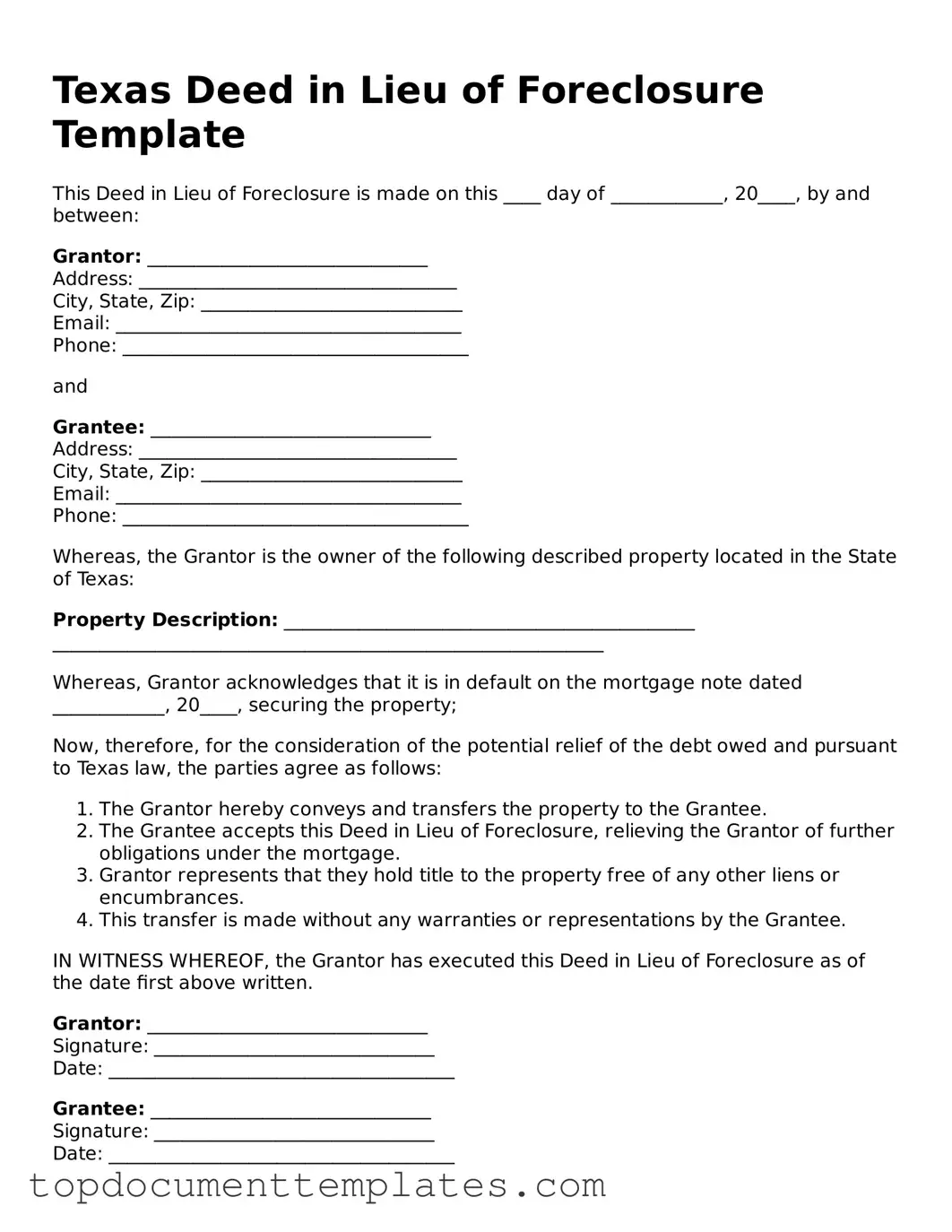Valid Deed in Lieu of Foreclosure Form for Texas State
A Texas Deed in Lieu of Foreclosure is a legal document that allows a homeowner to voluntarily transfer their property back to the lender in order to avoid the foreclosure process. This option can provide relief for those facing financial difficulties, as it may help mitigate the negative impacts of foreclosure on their credit. If you're considering this path, you can fill out the form by clicking the button below.
Open This Form
